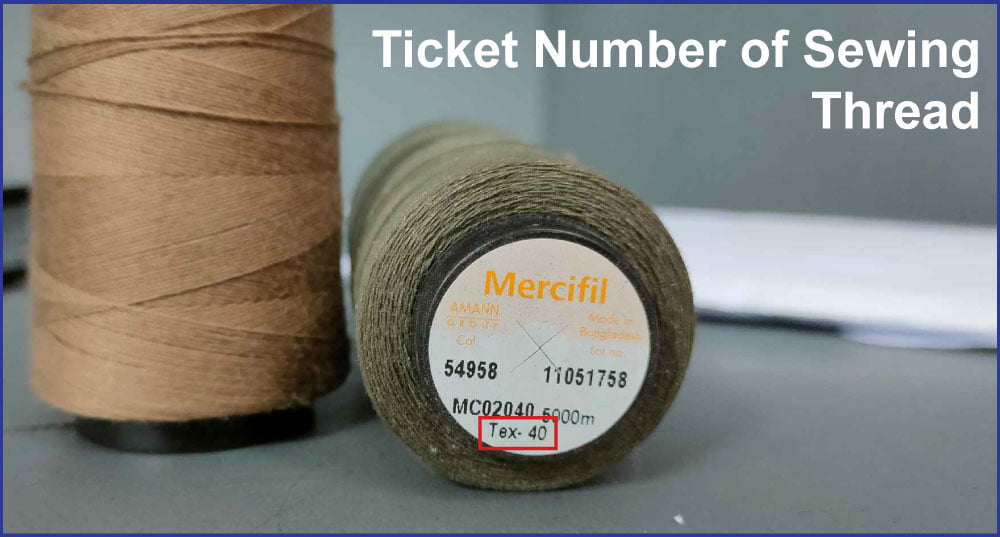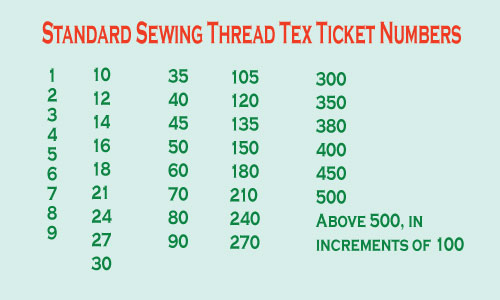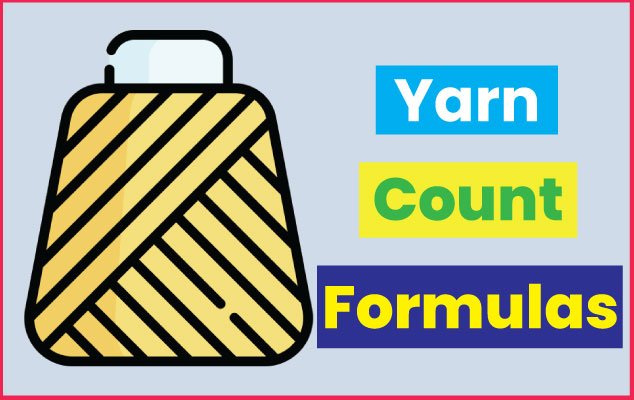Thread Sizes: Ticket Number of Sewing Thread
Last updated on July 4th, 2023 at 11:20 pm
Identification of thread size, called ticket number, is undergoing a transition. Different kinds of yarns had different numbering designations. On January 1, 1980, the Thread Institute adopted a standardized ticket numbering system based on the Tex system of numbering yarn. The system is to be used on a voluntary basis by its member manufacturers, converters, and jobbers. Adoption by the American Society for Testing and Materials (ASTM), the American National Standards Institute (ANSI), and the International Organization for Standardization (ISO) is accepted.

Pending full acquaintance and acceptance by industry and consumers, both the past systems and the Tex system will be used. It is, therefore, necessary to describe the several ticket number systems for the appropriate application.
The size of spun thread had always been expressed in terms of its diameter: the higher the number, the finer the thread. At one time, the thread had been made only from three-ply spun yarns. Therefore, a spun yarn thread of 50 three-ply (50/3) had a ticket number of 50, a thread of 60 three-ply (60/3) had a ticket number of 60, and so forth. Subsequently, the number of plies in sewing thread was extended to two, three, four, and six-ply. A ticket number of 50 could therefore indicate a 50 two-ply (50/2), a 50 three-ply (50/3), a 50 four-ply (50/4), or a 50 six-ply (50/6); but the thickness of the thread in each case was the same, while each ply was thinner. The greater number of ply yarns implied greater thread strength.
The sizes of mercerized cotton sewing thread were identified by letter as well as number. The range was from F (coarsest) to A (medium), and then from 0 to 0000 (finest).
Sewing thread is also made of filament fibre. The denier designation had been used, and the lower the number, the finer the thread. The size of filament sewing thread had been identified by the denier, except that the last digit was omitted. For example, a 180 denier thread had a ticket number 18.
The Tex system is intended to give orderliness by providing one ticket numbering system based upon the metric system which is expected to become universally adopted. Since Tex is the weight in grams of a 1000-meter length and is a direct numbering system, the greater the weight, the thicker the thread and therefore higher the number. Ticket numbers are based on actual Tex size of the thread in the griege stage, i.e. twisted, braided, or extruded before any dyeing, special processing, or finishing. The purpose of the stipulation is intended to obviate the alteration of the thread’s apparent size by any finishes. The following is the system adopted:
One important caution should be noted when using the Tex ticket numbers. When selecting the proper thread size, threads of the same fibre and type must be compared. Since the Tex ticket numbering system is based on weight and since different kinds of fibres or types have different weights, the same Tex number of threads of different fibres or types will not necessarily be of the same thickness and may therefore not be interchangeable.
You may also like: Formulas for the Determination of yarn Count





60/3 and 4/30 calculate the ticket number…
please solve it….
it is not a clear solution….